雅思剑10最后一篇文章的翻译(雅思考试官方指南test1)很多朋友对这方面很关心,大学路整理了相关文章,供大家参考,一起来看一下吧!
本文目录一览:
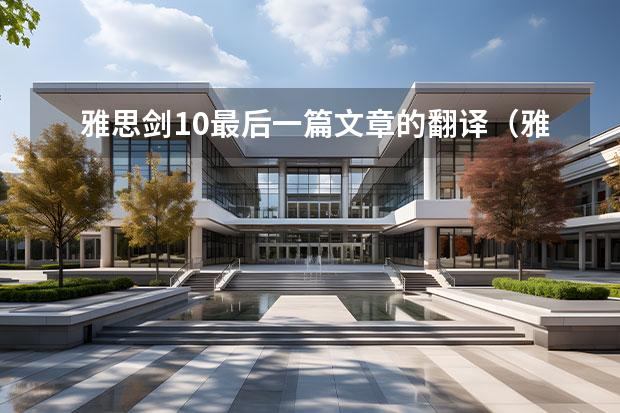
雅思剑10最后一篇文章的翻译
洛阳大华雅思提醒您,
剑桥雅思10
Test1给我们提供了一篇3.5分的小作文,为此特发此文,提供一篇质量高一些的文章,希望能给想要拿高分的鸭鸭一些有价值的参考。尤其是在语言多样性和信息连接性方面。
(p.s.为了阅读此文便利,特意将汉语版陈列如下,同时也让鸭鸭们感受汉语和英语之间的转化过程。)
这两个饼状图显示了能源在澳大利亚家用和温室气体排放的信息。
The
two
pie
charts
illustrate
statistical
information
respectively
regarding
how
energy
is
used
in
an
average
Australian
household
and
the
greenhouse
gas
emissions
that
result
from
these
energy
uses.
我们先来谈谈澳大利亚的能源使用情况。heating占据了整体的能源消耗的最大比例,42%。而the
figure
for
water
heating也占据了一个大的比例,仅比heating低那么一点,30%。相比之下,refrigeration,lighting,cooling只占了比较小的一部分比重,分别占据7%,
4%和只有2%。之后,剩下的15%的能源消耗是用在其他家电上的。
First
let
us
talk
about
the
energy
consumption
of
household
facilities
in
Australia.
Heating
possesses
the
largest
proportion
of
total
energy
usage
in
family
unit,
accounting
for
42%,
followed
by
the
figure
for
water
heating
which
also
occupies
a
large
percentage
with
30%.
In
contrast,
the
data
for
refrigeration,lighting,cooling
are
much
less
significant,
7%,
4%
and
only
2%
respectively.
Finally,
the
remaining
15%
of
the
consumption
is
used
on
other
appliances.
再看看以上提到的这些家电的温室气体排放情况,与上图存在很大不同。首先,能耗最大的heating在温室气体排放方面略有逊色,以15%的比重排在第三。而最多的温室气体排放来自于water
heating,32%。
相比之下,refrigeration,lighting,cooling的温室气体排放量几乎都是它们的能源使用量的两倍。其他家电所产生的CO2,占据了剩下的28%。
As
for
the
situation
of
greenhouse
gas
emissions
from
the
appliances
mentioned
above,
it
largely
differs
from
the
last
pie.
First,
heating,
which
consumes
the
greatest
amount
of
energy,
shows
a
*aller
share
in
greenhouse
gas
emission,
listed
in
the
third
place
with
a
proportion
of
15%,
while
the
biggest
share
of
emissions
is
from
water
heating
(32%).
By
comparison,
proportions
of
greenhouse
gas
emissions
in
refrigeration,
lighting
and
cooling
almost
double
their
figures
for
energy
use.
CO2
derived
from
other
appliances
consist
of
the
remaining
28%.
根据这两个饼状图,heating是最为环保的家电,而water
heating不仅能耗大,CO2的排放量也相当大。refrigeration和lighting虽然能耗比较小,但是温室气体的排放量也比较大。
Overall,
it
is
noticeable
that
heating
is
the
most
environmentally
friendly
appliance
while
water
hearing
not
only
consumes
more
energy
sources
but
also
give
out
the
most
carbon
dioxide.
Meanwhile,
although
refrigeration
and
lighting
consume
less,
they
emit
more
as
well.
TIPs:文章的语言的多样性取决于主语的多样性和灵活性,该篇所用主语的形式如下:
1.
Heating——题目中所给的名词
2.
the
data
for
refrigeration,lighting,cooling——“数据”作主语
3.
the
remaining
15%——数字作主语
4.
the
biggest
share/proportions
of
greenhouse
gas
emissions——比重词作主语
5.
CO2——题目中greenhouse
gas的同义改写作主语
6.
they——代词作主语
信息之间的链接,请参看文章中的标注
希望此文能让更多鸭鸭们找到雅思小作文的写作思路和写作灵感。
雅思考试官方指南test1
剑桥雅思官方指南Test1阅读真题及解析1
雅思阅读部分一直是考生在准备雅思考试的时候提分较快的科目,只要打好雅思基础,再辅以大量的真题练习,考生很容易在雅思阅读考试中取得一个较高的分数。洛阳大华雅思为大家摘选并总结了剑桥雅思官方指南Test1阅读真题及解析1,希望考生可以配合实际的题目训练进行阅读,一定会对接下来的雅思考试有所帮助:
Passage 1 – The Dover Bronze-Age Boat
READING PASSAGE 1 Questions1–13
Questions 1–5
解题策略(Tips and strategies)
此题为阅读中较为简单的图表填空题。做此类题目必须注意一下三点:
•该题目不一定按照顺序在文中出现;
•注意挑选容易定位的定位词;
•分析空格处所要填写内容的语法现象,并注意空格处对于字数的要求。
答案解析(Answer *ysis)
Question
Answer
Location
Analysis
1
road
1992
空格之前的“a”表明此处所填的单词必须是可数名词单数。所以很快我们可以从文章第一段找到“1992”这个定位词,句子中最符合的可数名词单数就是“road”这个单词。
2
conference
2002
此处所填的单词是名词。根据定位词“2002”在文章第五段找到定位。题干中的句子的意思是说在2002年召开一个国际化的_____来收集信息。所以根据句意和搭配,最终选出“conference”这个词。
3
proposals
2004
这个空格的定位很简单,答案将会出现在文章的第七段。题干的意思是和重建有关的一件事会被解决或者*。根据句意,具体定位到“Detailed proposals to reconstruct the boat were drawn up in 2004”这句话,所以最后挑选“proposals”这个单词。
4
launch
2007, 1550BC
这个答案出现自文章第八段的后半部分。除了“2007”,“1550BC”也是一个重要定位词,所以这个答案很好挑选,根据句意马上就可以选出“launch”这个单词。
5
exhibition
2012
这个答案出现在文章最后一段。题干的意思是一个和青铜器时代有的时间主要关注了这艘船和其他物品。所以根据句意最后一段的第一句话里就有我们需要的答案“exhibition”。
Questions 6–9
解题策略(Tips and strategies)
此题为阅读中最为常见的判断题,每次考试都会遇到。但此题型的难度系数在整个阅读中并不低,所以要格外重视。
•判断题在文章中按顺序出现;
•定位词的选择将是一个难点;
•学会分析题干和文章中对应的句子。
答案解析(Answer *ysis)
Question
Answer
Location
Analysis
6
TRUE
the boat had been damaged
文章第四段倒数第二句话“The boat was not a wreck, but had been deliberately discarded, di*antled and broken.”和题干表达的意思一致,都说明这艘船故意破坏和抛弃的。特别注意题干中的“on purpose”和原文中的“deliberately”的同义替换;“damage”和“di*antled”的替换。
7
FALSE
Initially
根据定位,原文中提到当时的主流的研究是关于这艘青铜器时代的船只的文化背景等,而非题干中所说的科技方面的研究。所以答案选择FALSE。
8
FALSE
northern end
根据定位词,这道题出现在文章第六段靠后的部分。题干的含义是考古学家又回到发掘现场并找到了消失的位于船体北部的船尾部分。但是文章中提到“the possibility of returning to Dover to…was explored, but…difficulties…”说明因为一些困难,这是并没有成功。所以原文和题干的内容是抵触的,答案选FALSE。
9
NOT GIVEN
2004
在整道判断题中,我们可以先从这大道题开始,因为它最容易定位。根据“2004”这个定位词我们找到了文章的第七段。题干的含义是“2004年发现的证据暗示这艘青铜器时代的船只曾经用于商贸。而在文章中只是说2004年发现的证据证明曾经有一个群落横跨了英吉利海峡,但没有提到这艘船的使用目的,所以此处只能选择NOT GIVEN这个选项。
Questions 10–13
解题策略(Tips and strategies)
此题为阅读考试中出现频率并不高的简答题。
•简答题按照顺序在文章中出现;
•注意简答题的相关的特殊疑问词;
•注意答案不需要原句重现,需要的是从原文中挑选符合要求的词、数字或词组。
答案解析(Answer *ysis)
Question
Answer
Location
Analysis
10
six/6
metres/meters/m
How far under the ground
通过审题,我们了解到这里最多可以填写3个单词和一个数字。结合这道题的定位词“how far”,它的答案一定包含和长度有关的数字。根据这些线索,我们找到文章的第二段第一句话,所以这艘船是从地下6米处被挖掘出的。
11
(pads of) moss
natural material, prevent water
通过理解这道题的题干,我们不难发现它还是在讲述这艘船发掘时候的事情,所以这道题的答案不会离开上一道题很远。我们最终在文章第三段的最后一句话找到了答案,文中的“watertight”就相当于题干中的“prevent water”,防水的天然材料就是一些苔藓。
12
(the) hull (shape)
aspect of the boat, 2012
这道题的定位相当简单,根据年份我们可以定位到文章的最后两段。同时根据段落大意,我们可以更精确地定位到倒数第二段。2012年的重建主要关注的就是船体的重建。
13
cost and time/cost
time/time cost
two factors, reconstruction,
not
接着上一道题的定位,我们不难发现这道题也出现在倒数第二段。题干中的重要信息除了“two factors”就是这个否定“not”,段落中涉及到这两点的句子只有最后一句话——花费和时间使得人们不得不按照原型的一半来重建这艘青铜器时代的船只。
photovoltaics on the rooftop 雅思阅读答案
photovoltaics on the rooftop
题目详解
Questions14-19
14 该题目信息出现在B段,第4行“During the day,when the home may not be using much electricity,…At night,power flows the opposite way.”与题目相对应,因此正确答案为B
15 该题目信息出现在D段,第三行This installation consists of 18 "dummy' homes. Each equipped with its own 2-5 kilowatt photovoltaic system (about 20 - 50 square meters for each system).因此,正确答案为D。
16 该题目信息出现在H段,第二行‘For example, the use of photovoltaics or the equivalent maybe stipulated to lessen demands on the grid network and hence reduce
fossil fuel
emissions’。因此,正确答案为H.
17 该题目信息出现在B段,中间部分‘Figure 1 illustrates the system. During the day, when the home may not be using much electricity, excess power from the solar array is fed back to the grid, to factories and offices that need daytime power. At night, power flows the opposite way’。因此,正确答案为B.
18 该题目信息出现在H段,‘Approvals for building renovations may also be conditional upon taking such energy-saving measures. If this were to happen, everyone would benefit.’ 因此,正确答案为H.
19 该题目信息出现在E段,第二行‘Large federal and regional government subsidies were involved, accounting in most cases for 70% of the total system costs。’因此,正确答案为E.
Questions20-26
20 该题目信息出现于A 段末句‘Solar energy, the conversion of sunlight into energy, is made possible through the use of photovoltaics, which are simple appliances that fit onto the roof of a house.’
太阳能电池板
不是储存电量,而是装换电量的。因此正确答案为false。
21 该题目信息出现于 c段,首句和末句‘The first systematic exploration of the use of photovoltaics on homes began in the US during the 1970s。’ A change in US government priorities in the early 1980s halted this program.原文说1970年,在美国首先开始,但是在1980年终止了这个项目。因此正确答案为false。
22 该题目信息出现于D段,A large residential test station was installed on Rokko Island beginning in 1986. This installation consists of 18 "dummy' homes. Each equipped with its own 2-5 kilowatt photovoltaic system (about 20 - 50 square meters for each system). Some of these simulated homes have their own electrical appliances inside, such as TV sets, refrigerators and air conditioning units, which switch on and off under computer control providing a lavish lifestyle for the non-existent occupants. For the other systems, electronics simulate these household loads.正确答案为TRUE.
23 该题目信息出现于f段,倒数第三行‘The program made a modest start in 1994, when 539 systems were installed with a government subsidy of 50 percent’。因此,正确答案为TRUE.
24 该题目信息在原文没有对应,因此,正确答案为NOT GIVEN.
25 该题目信息出现于G段第三行‘Gases produced by the burning of fossil fuels in the production of electricity are a major contributor to the green house effect。’根据原文不能判断题目中的‘gas emission’是否是住宅用电的主要来源,因此,正确答案为NOT GIVEN.
26 该题目信息出现于H段,‘ It is likely that in the future, governments will develop building codes that attempt to constrain the energy demands of new housing’。原文说的是计划将来实施,题目说现必须要,因此,因此正确答案为FALSE。
望采纳~
BY:
极客
英语
以上就是大学路为大家带来的雅思剑10最后一篇文章的翻译(雅思考试官方指南test1),希望能帮助到大家!

 全面禁止课外辅导机构?别误解了,要整顿的是这类培训班
全面禁止课外辅导机构?别误解了,要整顿的是这类培训班
 课外辅导真的能提高孩子高考成绩吗?
课外辅导真的能提高孩子高考成绩吗?
 中国父母在子女课外辅导上花了多少钱
中国父母在子女课外辅导上花了多少钱
 全面禁止课外辅导机构,你支持吗?
全面禁止课外辅导机构,你支持吗?
 深度解读:课外辅导1对1,在线课,小班课,大班课,家长该如何选择?
深度解读:课外辅导1对1,在线课,小班课,大班课,家长该如何选择?
 我们为什么选择课外辅导?
我们为什么选择课外辅导?
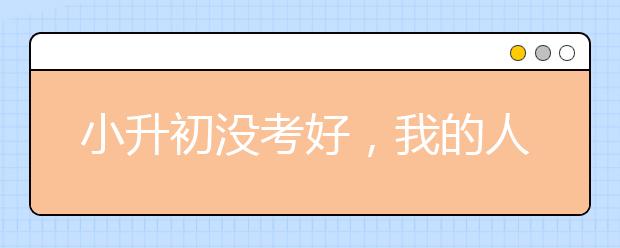 小升初没考好,我的人生好像完蛋了
小升初没考好,我的人生好像完蛋了
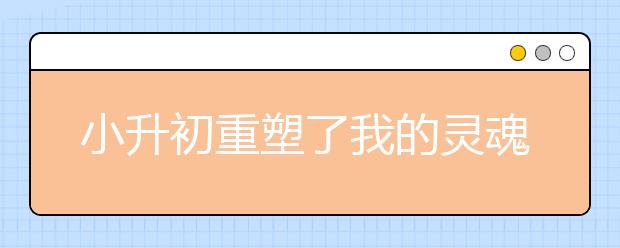 小升初重塑了我的灵魂,还有肉体
小升初重塑了我的灵魂,还有肉体
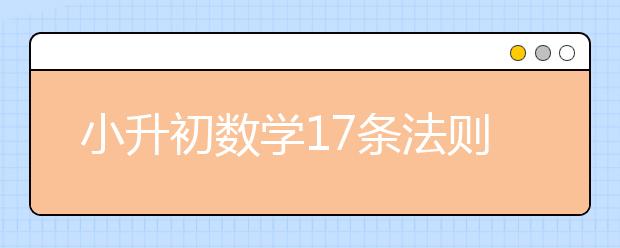 小升初数学17条法则,做题一定会用到!
小升初数学17条法则,做题一定会用到!
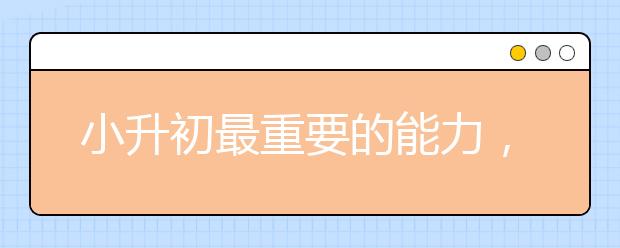 小升初最重要的能力,现在开始准备一点也不晚!
小升初最重要的能力,现在开始准备一点也不晚!









